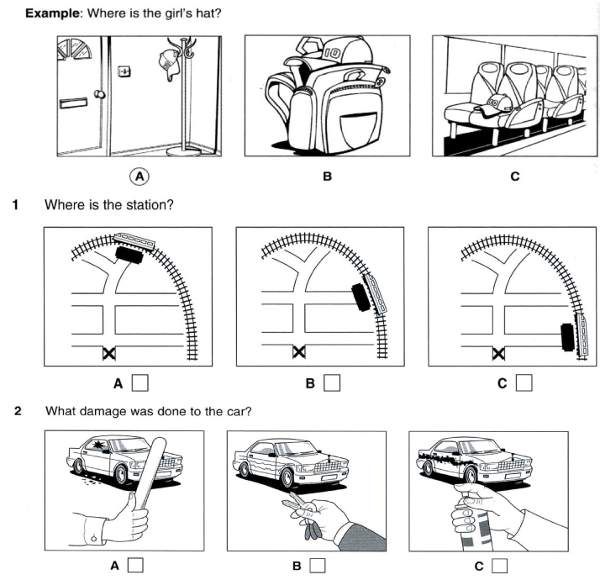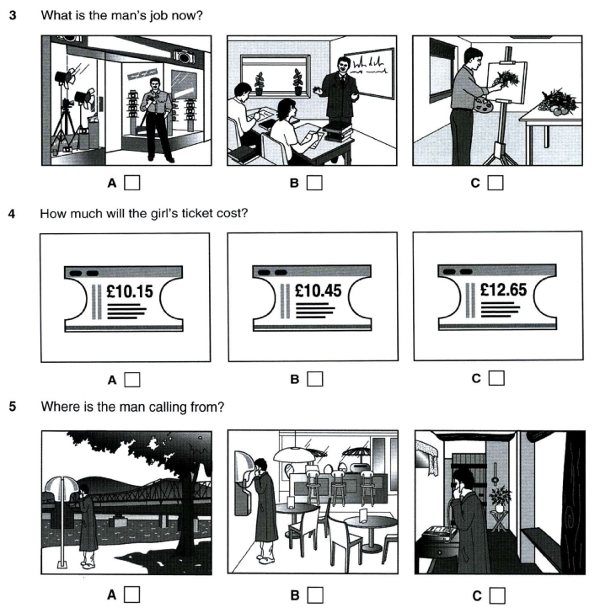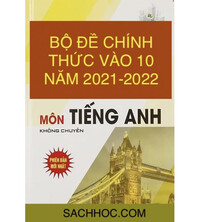HOT Truy cập: Đáp án Đề thi tuyển sinh lớp 10 môn Anh Long An năm 2020 để đối chiếu kết quả bài làm sau khi thời gian làm bài kết thúc.
Đề thi tuyển sinh vào lớp 10 THPT Chuyên môn Tiếng Anh
Đề thi tuyển sinh vào lớp 10 THPT Chuyên môn Tiếng Anh (Đề Chuyên) năm học 2015-2016 tỉnh Long An là đề thi chính thức cho các em thi vào THPT Chuyên tỉnh Long An. Đây là tài liệu tham khảo hữu ích cho các em thí sinh chưa dự thi vào lớp 10 môn Anh. Đáp án sẽ được Tìm Đáp Án cập nhật trong thời gian sớm nhất có thể!
Đề thi tuyển sinh vào lớp 10 môn Tiếng Anh năm học 2016 - 2017 Sở GD-ĐT Bình Phước
Đề thi tuyển sinh vào lớp 10 THPT Chuyên môn Tiếng Anh (Đề chung) năm học 2016-2017 tỉnh Vĩnh Phúc
Đề thi tuyển sinh vào lớp 10 THPT Chuyên môn Tiếng Anh (Đề Chuyên) năm học 2016-2017 tỉnh Vĩnh Phúc
| SỞ GD&ĐT LONG AN ---------------- ĐỀ CHÍNH THỨC (Đề thi có 8 trang) | KỲ THI TUYỂN SINH LỚP 10 THPT CHUYÊN LONG AN NĂM HỌC 2015-2016 Môn thi: TIẾNG ANH (CHUYÊN) Thời gian làm bài: 120 phút (không kể thời gian phát đề) |
Thí sinh làm bài trên phiếu trả lời (Answer sheet), không làm bài trên đề thi này.
I. LISTENING: (2 points)
PART 1: There are 5 questions in this part. For each question there are three pictures and a short recording. Listen to each recording twice. Choose the correct picture (A, B or C) and write it in the numbered box on your answer sheet. (1 point)


PART 2: You will hear a conversation between a man, Marco, and his wife, Sarah, about a film they have just seen at the cinema. Decide if each sentence is correct or incorrect. If it is correct, write the letter (A) for YES, if it is not correct, write the letter (B) for NO in the numbered box on your answer sheet. (1 point)
| A | B | |
| YES | NO | |
| 1. Sarah was expecting to enjoy the film. 2. Marco and Sarah agree that the city in the film was London. 3. Marco feels that the length of the film made it rather boring. 4. Sarah was upset about how some of the audience behaved during the film. 5. Sarah was disappointed with the way the main actor performed. |
II. READING: (2 points)
PART 1: Read the following passage, then choose the answer (A, B, C or D) which you think fits best according to the text. Write your answer in the numbered box on your answer sheet. (1 point)
Whole families of musicians are not exactly rare. However, it is unusual to come across one that includes not only writers and performers of music, but also an instrument maker.
When South Wales schoolteachers John and Hetty Watkins needed to get their ten-year-old son, Paul, a cello to suit his blossoming talents, they baulked at the costs involved. "We had a look at various dealers and it was obvious it was going to be very expensive," John says. "So I wondered if I could actually make one. I discovered that the Welsh School of Instrument Making was not far from where I lived, and I went along for evening classes once a week for about three years."
"After probably three or four goes with violins and violas, he had a crack at his first cello," Paul, now 28, adds. "It turned out really well. He made me another one a bit later, when he'd got the hang of it. And that's the one I used right up until a few months ago." John has since retired as a teacher to work as a full-time craftsman, and makes up to a dozen violins a year – selling one to the esteemed American player Jaime Laredo was "the icing on the cake".
Both Paul and his younger brother, Huw, were encouraged to play music from an early age. The piano came first: "As soon as I was big enough to climb up and bang the keys, that's what I did," Paul remembers. But it wasn't long before the cello beckoned. "My folks were really quite keen for me to take up the violin, because Dad, who played the viola, used to play chamber music with his mates and they needed another violin to make up a string trio. I learned it for about six weeks but didn't take to it. But I really took to the character who played the cello in Dad's group. I thought he was a very cool guy when I was six or seven. So he said he'd give me some lessons, and that really started it all off. Later, they suggested that my brother play the violin too, but he would have none of it."
"My parents were both supportive and relaxed," Huw says. "I don't think I would have responded very well to being pushed. And, rather than feeling threatened by Paul's success, I found that I had something to aspire to." Now 22, he is beginning to make his own mark as a pianist and composer.
Meanwhile, John Watkins' cello has done his elder son proud. With it, Paul won the string final of the BBC Young Musician of the Year competition. Then, at the remarkably youthful age of 20, he was appointed principal cellist of the BBC Symphony Orchestra, a position he held, still playing his father's instrument, until last year. Now, however, he has acquired a Francesco Rugeri cello, on loan from the Royal Academy of Music. "Dad's not said anything about me moving on, though recently he had the chance to run a bow across the strings of each in turn and had to admit that my new one is quite nice! I think the only thing Dad doesn't have – and may acquire after about 50 – 100 years – is the power to project right to the back of large concert halls. It will get richer with age, like my Rugeri, which is already 304 years old."
Soon he will be seen on television playing the Rugeri as the soloist in Elgar's Cello Concerto, which forms the heart of the second programme in the new series, Masterworks. "The well-known performance history doesn't affect the way I play the work," he says. "I'm always going to do it my way." But Paul won't be able to watch himself on television – the same night he is playing at the Cheltenham Festival. Nor will Huw, whose String Quartet is receiving its London premiere at the Wigmore Hall the same evening. John and Hetty will have to be diplomatic – and energetic – if they are to keep track of all their sons' musical activities over the coming weeks.
1. Why did John Watkins decide to make a cello?
A. He wanted to encourage his son Paul to take up the instrument.
B. He was keen to do a course at the nearby school.
C. He felt that dealers were giving him false information.
D. He wanted to avoid having to pay for one.
2. What is meant by "crack" in paragraph 3?
A. attempt
B. plan
C. shock
D. period
3. What do we learn in the third paragraph about the instruments John has made?
A. He considers the one used by Jaime Laredo to be the best.
B. He is particularly pleased about what happened to one of them.
C. His violins have turned out to be better than his cellos.
D. It took him longer to learn how to make cellos than violins.
4. Paul first became interested in playing the cello because
A. he admired someone his father played music with.
B. he wanted to play in his father's group.
C. he was not very good at playing the piano.
D. he did not want to do what his parents wanted.
5. What do we learn about Huw's musical development?
A. His parents' attitude has played little part in it.
B. It was slow because he lacked determination.
C. His brother's achievements gave him an aim.
D. He wanted it to be different from his brother's.
PART 2: You are going to read an article about an underwater museum. Five sentences have been removed from the text. Choose from the sentences A-F the one which fits each gap (1-4). There is one extra sentence which you do not need to use. There is an example at the beginning (0). Write your answer in the numbered box on your answer sheet. (1 point)
UNDERWATER WORLD
If you want to dive in clear blue waters, find rich marine life and swim over the remains thrown away by ancient sailors, the tiny island of Ustica is the place to go. This island, 60km from the Italian coast, is the site of Europe's only underwater museum. (0) D .
The clear waters attract some of the world's best underwater divers. The International Academy of Underwater Sciences, which was set up to encourage underwater exploration, is based in Ustica. (1)____.
Dr Honor Frost, a Bristish underwater archaeologist and Golden Triden winner, believes that Ustica shows that some underwater remains are best life in the surroundings where they have been preserved for centuries. (2) ____.
According to Frost, the establishment of the underwater museum has made an interesting area of sea floor, together with the objects which fell to it in antiquity, safe for future study. (3) ____
For example, it is puzzling that only iron anchors of quite a late date seem to have been lost there, despite local evidence of sea trade during a period nearly four thousand years ago, when stone anchors would have been in use. Among the anchors and other remains there are an extraordinary number of Roman millstones, which were widely traded throughout the ancient world. (4) _____.
A. Many questions remain to be answered about the museum site.
B. However, this section of the museum, although already accessible to diving visitors, still contains material of interest to researchers.
C. Made of volcanic rock, they were carried by corn ships heading from Rome to the ports of the north African coast.
D. Only here can divers explore labelled exhibits such as anchors, pots and millstones, which fell to the sea floor centuries ago.
E. This gives divers the experience of underwater archaeology without disturbing important sites.
F. This month it presented its Golden Trident awards, the underwater equivalent of the Nobel prizes, which have been awarded annually since 1960.







